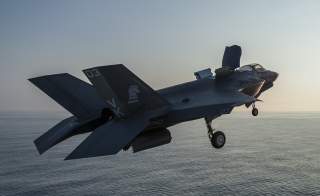5 Ways the Navy Will Beat Any Nation in a War
It’s worth noting that the Navy is currently on the cusp of a technological revolution, with new ships, fighters, radars, lasers, railguns and unmanned systems on the horizon. In ten years, a repeat of this list may look very different.

Virginia-class Attack Submarine:
One of the most successful weapons programs of the post-Cold War period, the Virginia class attack submarine combines one of the most advanced nuclear attack submarines with an affordable shipbuilding program. At least 33 units are planned.
Each Virginia class is 377 feet long and 34 feet in diameter and weighs 7,800 tons submerged. Each has 12 vertical launch tubes for Tomahawk missiles., as well as four 533mm torpedo tubes capable of launching Mk 48 ADCAP homing torpedoes, mines, and torpedo tube-launched unmanned underwater vehicles. Subs of the class are also equipped with lockout chambers for divers and can carry SEAL mini submarines.
In addition to their attack mission, Virginia submarines are also useful surveillance platforms. Each has an extensive sonar suite with bulb, sail and chin sonars covering the front hemisphere, sonar arrays on the flanks, and a towed array to detect objects in the sub’s wake. The ship is equipped with Electronic Support Measures sensors for detection of enemy signals and optronic sensors. These sensors can be augmented with data from UUVs and special forces. Intelligence can then be relayed to the surface and beyond via high-rate data transmitters.
The Virginia class is also a success from a cost perspective. The Seawolf-class that preceded it was a financial disaster—29 submarines were planned but the first three ships averaged $4.4 billion each and plans for further submarines were terminated.
The Virginias, on the other hand, have come in at an average of just under $2 billion each. Even better, by 2011 they were being delivered early and under budget. USS Mississippi was commissioned a year early and $60 million under budget. In May, the U.S. Navy ordered ten submarines from General Dynamics Electric Boat and Huntington Ingalls for $17.6 billion, making the per-unit cost a bargain at $1.76 billion. Under the agreement each shipyard would churn out a submarine a year for five years, ensuring that two submarines would join the fleet annually.


